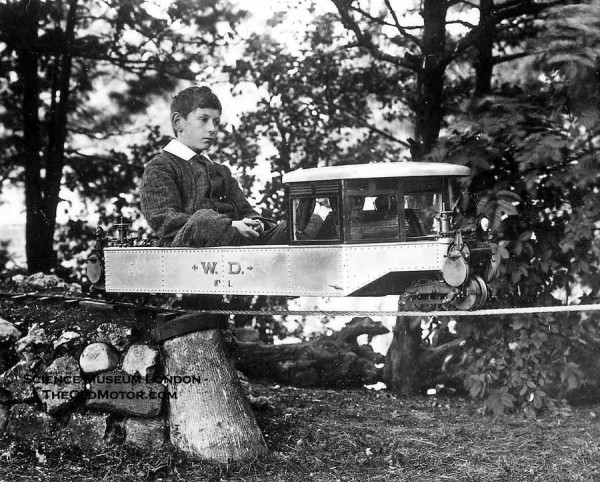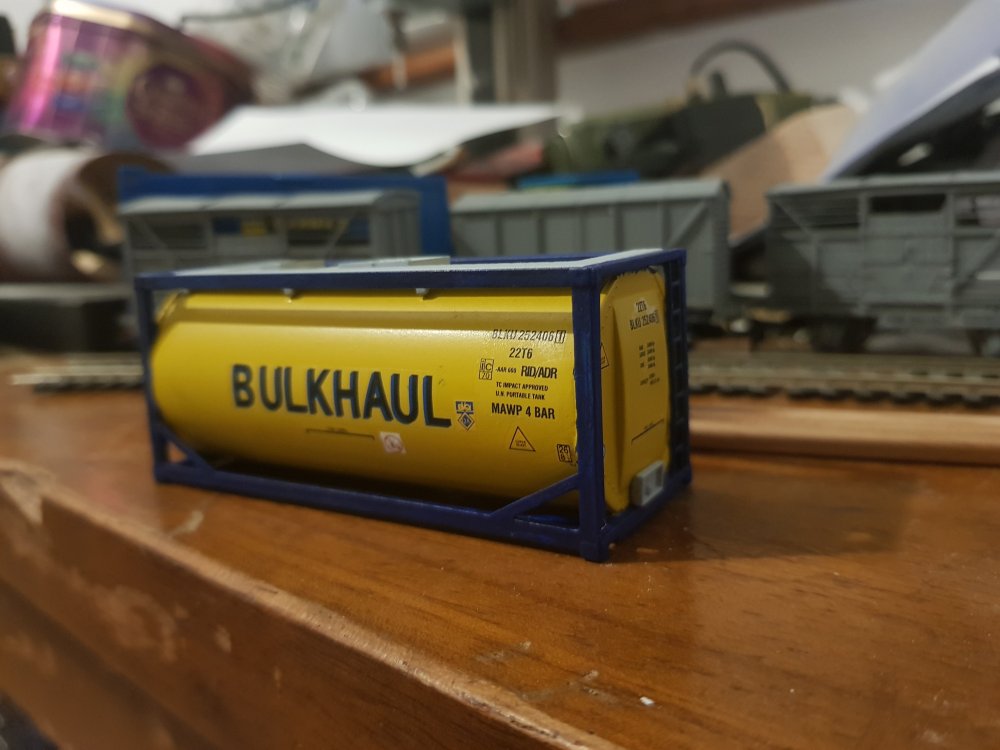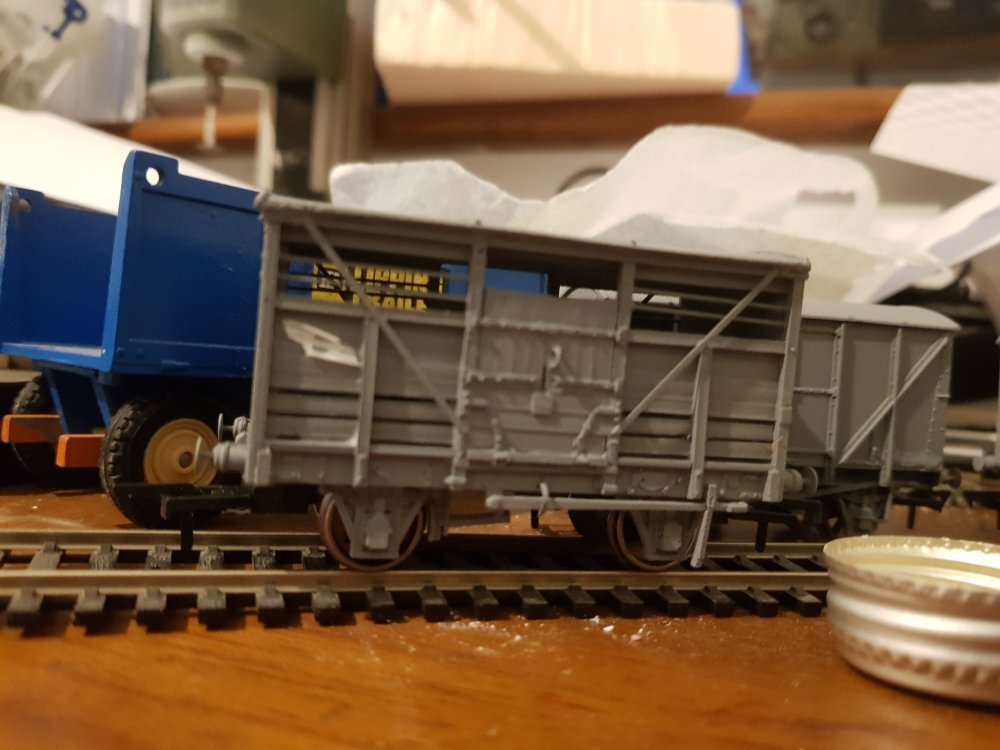
Brack
-
Posts
69 -
Joined
-
Last visited
Content Type
Profiles
Forums
Resource Library
Events
Gallery
Blogs
Store
Community Map
Posts posted by Brack
-
-
21 hours ago, DoctorPan said:
What makes it nonsense?
Only 2 rows of standing in all that space?
Even accounting for rising obesity rates, anyone who's been to London knows full well you could get another couple of rows in that gap in the middle.
-
1 hour ago, Horsetan said:
I was frequently in the same area between 1998 and 2003 (and may even have walked past you without knowing; who knows!?) and my cousin - at the time a junior doctor at St. James - kept telling me I was lucky not to end up as one of his daily patients since he often had to patch up those who had either been assaulted, stabbed, or otherwise injured due to general inebriation.
I recall the gardai telling us to go a different way back to the flat than through fatima mansions one night... I think they were watching/staking out something. Likewise Dolphins barn could be hairy, and out inchicore way...
-
 1
1
-
-
When I lived there (2001-3) I can think of some intact unused track in the middle of dublin next to a major tourist attraction, with surviving original stock and locos which mightve been restored fairly easily.
Guinness presumably not interested?
-
 1
1
-
-
On 3/1/2024 at 3:48 PM, skinner75 said:
Possibly the Brennan Monorail system?:
https://www.youtube.com/watch?v=kUYzuAJeg3M
a pretty crazy idea, which I only discovered for the first time over Christmas
The prototype is in the NRM at York, used to be in the interesting bit with all sorts near the signalling training layout and the large scale kitson meyer.


I've often wanted to build a working one. It has been done in japan by a couple of modellers.
-
 1
1
-
 1
1
-
-
The barclay is shaping up nicely.
Zooming in on a few of Dad's photos, whilst i can't find a top down view (west donegal not entirely being overbridge country) and i don't think the tanks are sheeted over flat to the boiler, there is a little fill in piece at the front that follows the boiler's arc, where the handrail comes out (not entirely sure I'm making much sense here, but hopefully zooming in on the photos will help decipher what I'm saying!).



-
 6
6
-
-
Looking at the service sheet (linked on here)
https://support.hornby.com/hc/en-gb/articles/360016395479-HSS-415-Adams-Radial-4-4-2T
Might give some clues.
What I would say is that even if the rods will pass, do you want to go through all the work and effort of scratchbuilding a body and have that little metal bit sticking out over the corner of the wheel?
There was a guy on rmweb who used the chassis for some small highland 440s who chopped the protrusions off and just glued the motor in. I don't think it'd be too tricky, just drop the wheels and wrap everything in masking tape and clingfilm before you start cutting.
Ironically, the oxford Radial looks to be more amenable in the chassis department:

And theres a body free one on ebay
-
 1
1
-
-
4 hours ago, Patrick Davey said:
5.5 is the chosen scale

Then chop away!
-
 1
1
-
-
Apologies if I've missed it, but what scale are you going for?
I'm just think that in 7mm rtr chassis on 16.5mm I'd probably start from a SR schools class - 10' coupled wheelbase and 6'7" wheels should scale out at 40mm/26.33mm
The S class had 6'3 coupled wheelbase and 3'9" wheels, in 7mm that'd be 43.75mm/26.25mm
The Hornby Railroad ones are loco drive, and quite a compact chassis unit too - the bogie/cylinder end should be pretty easy to saw off.

The Radial has smaller wheels and a shorter wheelbase, but if you were looking at 5.5mm it might well be a better bet and you can ignore my musings in this post!
-
The question people will ask is about whether 16.5mm looks ok for 3'. That's a personal opinion really - like 16.5 vs 21 for broad gauge in 4mm.
Dad (IrishSwissErnie) and I did some irish NG in O-16.5 about 20 years ago (an earlier incarnation of the sligo and donegal junction).
Everything was built using rtr 00 chassis - 21t hopper chassis for most vans/wagons and plate frame bogie bolster bogies. Locos used Bachmann's manor, mogul, n class and v1.
All styrene, lots of micro strip. Dad built most of the stuff, with a teenage me contributing a few wagons, vans, a railcar, an open topped cattle wagon and a Chilean taltal railway kitson meyer and nitrate gondola that perhaps were a touch extravagant!
Mostly freelance designs based around the products of certain builders. The length of run in the loft must've been nearly 40', but to me, watching a cattle train trundle along the scruffy grass, over the bridge and into the station was convincing enough.
My favourite locos were 1 & 2, a pair of beyer peacock 060t built on bachmann 43xx chassis.
He's got more photos and videos on his flickr in this album.
(Click on the image and I think it takes you there).
-
 8
8
-
-
The tanfield railway also have a few pregrouping coaches - ex NER, GNR and MSLR. Bodies retrieved from allotments and holiday camps, mostly on ex CCT 4w underframes, but they feel more appropriate to the railway and locos than a bunch of Mk1s would.
I rode on the Blonay-Chamby in switzerland in an ex RhB 4 wheeler and in each compartment, tied the the luggage nets was a very nicely put together scrapbook of photos showing that exact coach from builders photo in 1889, with a photo showing each decade of its service life, departmental use, deterioration and then restoration. A really nice touch, making you appreciate the preservation of the coach rather than just the loco pulling you.
I'd hope the knotty coaches have something similar - those who put them back together deserve to have that recognition of the scale of the effort required.
-
 2
2
-
-
1 hour ago, jhb171achill said:
Even in the Emperorship of Boristan, vehicles THAT far gone are rarely rescued
https://knottycoachtrust.org.uk/history-of-no-23/
These people at foxfield have done some remarkable work, but I agree - if currently restored revenue earning vehicles can't be maintained, I cannot see it being possible to fix up a non revenue earning vehicle that is very far gone. A shame, but I can't see it happening.
-
 1
1
-
 2
2
-
-
On another forum, in a chat about grounded van bodies, a member mentioned he knew of one very far gone body in a field. It's inland from Larne.
I asked his permission to bost the photos here, in the hope that somebody hear might be able to help work out what it is/was?
The folk who own the field reckon it's been there since the 50s, and was once a hen house, but the man who used to keep the hens is long gone. There is somewhere to tie up livestock inside, but whether it's original or not is unknown.
Looks like some sort of brake van with a single balcony end, but with doors for general goods, so a bit like a LSWR road van or the SLNCR drovers vans, but obviously not either of those.
Apparently the body is about 8' wide.
Did the NCC have anything similar? It's in their territory, closer to the narrow gauge than anything else.
He, and the owners would be interested to know what it once was, and any pictures would be very interesting.
-
 1
1
-
 1
1
-
-
42 minutes ago, Irishswissernie said:
plus Alan has now completed the Provincial wagons cattle trucks
Family effort - I got beth to paint the snails and numbers as she has steadier hands, then eleanor did the washes and weathering on two of them (under supervision).
-
 4
4
-
-
Thank you all for you kind words. He's still in there, 'enjoying' lots of scans. Looks like they might have found the cause of it all, and he's responding to the antibiotics. Not sure on the course of action just yet, but he'll likely be absent from the forum and flickr for a little while longer.
-
 4
4
-
 1
1
-
-
41 minutes ago, connollystn said:
Correction! My last post should be €500 000 000.
Anyway, if they do get the go-ahead I won't be alive to witness it.
That's a shame, they had half a chance of getting the €500!
-
 1
1
-
 1
1
-
-
- Popular Post
Dad (irishswissernie) got pretty ill over the last few days so has been temporarily relocated to a hospital bed. He's doing alright (for a given value of alright - he's on intravenous antibiotics and will be in for a little while so far as I can see), but seems better in himself than he was over the weekend (although he did manage to dispatch a shiny new bachmann double fairlie to my house for testing when my sister came over on sunday - runs beautifully, and sent back with a few feet of 9mm track).
The working diagnosis is some form of internal infection, presumably post surgery the other week, and they need to check on his digestive functions. So far as I'm concerned, I'm glad he's getting seen to, he's in the right place, and hopefully they get him all sorted out, but it does disrupt his posting and modelling a bit!
However he is currently cut off from the internet, so he asked me to let people on here know what's going on.
-
 21
21
-
14 minutes ago, Irishswissernie said:
Have you sorted out the dreaded curling transfers yet?
Have a new plan. Might be worse, but we'll see.
-
Is the pit just gravel on the bottom? Usually they're modelled as concrete.
-
The other interesting variation was K52.
SAR asked Dubs for a 3'6" gauge version of the K class.

-
 2
2
-
 1
1
-
-
I'm sure lots of folk have been wanting a 1:76 scale 737-800 for quite some time. There isn't too much else at shannon to measure up...
-
 1
1
-
-
Yes, they're just those ones.
12 hours ago, Galteemore said:They aren’t Methfix ones by any chance ?
Don't think so - I've questioned myself enough - at one point I wondered if they were press fix as the top surface seemed to want to stick more than the bottom. Obviously the snail would then be the wrong way around, so that isn't the case, but perhaps I wasn't thinking the clearest when I was working on them past midnight!
-
 1
1
-
-
Thanks for the suggestions. The wagons are painted Matt, but I'd used klear to gloss the area for the transfers, which usually works for me. Will have to have another think. Perhaps several layers of klear, a fresher bottle, or a different gloss varnish. I've always used klear as it is thin, bomb proof in terms of not reacting with other paints, and cheap. It works really well to seal in fiddly transfers like archer's rivets.
It's weird- not known transfers that both desperately want to curl and have no desire to stick either, and I've used some ancient ones in the past!
Will give it a few days to think.
-
On a slightly more depressing note, bought some microsol/set, put a bit of klear/gloss varnish on the surface (which has had a week to dry).
Tried twice more on the snails.
They curl up into a tight little roll.
The transfers look fine on their backing, but I've made a lot of models, with decals from loads of different sources and never had any do this before. A bit of silvering, or old decals tearing, but none that literally curl up away from the surface whatever you do.
This is from the other week - decals went on fine.
Might try and paint one. Or 3D print a stamp or stencil!
-
 1
1
-
-
Bit of a pain today with the cattle wagons - the snails curled up and wouldn't stick, despite attempting to persuade them with carrs transfix and others. I haven't had any trouble shoving transfers straight onto halfords grey before, but these definitely aren't cooperating.
Plan B involves a coating of klear on the area first, and I've ordered some microsol/microset as I've heard others swear by it. So there might be a brief hiatus until they turn up.
It was all going a bit too smoothly!
As an aside, the cattle wagons are a vastly easier build than the corrugated wagons - there is a lot of drilling, but a pillar drill makes light work of it. I only broke 1 drill this time too.
-
 7
7
-
.png.c363cdf5c3fb7955cd92a55eb6dbbae0.png)















_at_Peterborough.jpg/1280px-South_Australian_Railways_loco_K52_(narrow_gauge)_at_Peterborough.jpg)



If there was all the money in the world to bring meab back to the mainline what routes would it be cleared on. and what issues would there be to get over in order to get gsr 800 back to running order
in General Chat
Posted
Perhaps one might restore 800, then run her in Brazil or Australia where the loading gauge or track might be less of a concern?
Perhaps shipping the loco plus interested spectators over there might be cheaper than rebuilding the entire main line?
If the paulista lines could fit these
Or
Then a 4-6-0 ought not to be much trouble.